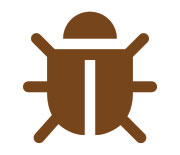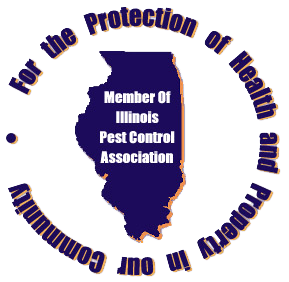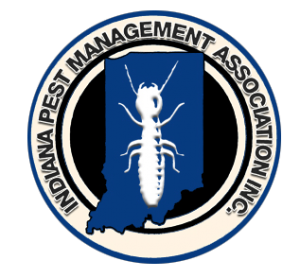March 4, 2014 11:22AM
David Wilson | Jeff Manes/For Sun-Times Media
 “creepy-crawly (kree-pee kraw-lee) 1. noun: a creepy or crawling animal, especially an insect.”
“creepy-crawly (kree-pee kraw-lee) 1. noun: a creepy or crawling animal, especially an insect.”
– Dictionary.com Unabridged
Along with his sister, Kelly, David Wilson owns and operates Monroe Pest Control in Hobart.
Wilson, 50, lives in Hobart and graduated from Hobart High School. He earned a bachelor’s degree in business management at Indiana University in Bloomington.
******************
Did you play football for Hobart High School?
“Yes, I played for Coach Howell,” he said. “We went downstate my junior and senior years and lost both years to Columbus East and then Carmel. My dad played for Hobart, too.”
Indiana University?
“The Hoosiers won the national championship the year before I went to IU in 1981 and won it the year after I left in 1987. Coming from Hobart, I didn’t realize that Indiana was a basketball state. It wasn’t until I lived in Bloomington that I realized I was wrong. They converted me into a basketball fanatic.”
The family business?
“My grandfather bought the business off of Monroe in 1928. He kept the brand name because there was a certain client base. It was actually Monroe Chemical Distributors out of Chicago, but they had a pest control branch in Gary. My grandfather worked there. That’s where he met my grandmother, who was the secretary. After they were married, they bought that branch of the business.
Grandpa’s name?
“Dewey Wilson.”
Where was the original location?
“They started out at 7th and Washington. After my dad, Red Wilson, graduated from IU, they relocated to 8th and Adams. That would have been in the early ’60s. In the mid-’70s, they outgrew that and found this place.”
How does Monroe Pest Control differ from the large pest control chains?
“The large corporations like to sign up clients to yearly contracts. A lot of people don’t like that. We give people what we think they need: ‘You want us to take care of your wasps? We’ll take care of your wasps. If you have any more trouble, here’s our card.'”
Speaking of wasps, I’d bet you’ve been stung a few times.
“By yellow jackets and hornets? Oh, my. More than a few times. We wear protective gear.”
Which species is the most aggressive?
“Yellow jackets. They have the ability to continue to sting. With that said, the sting of, say, a bald-faced hornet, is something you won’t forget.”
Do you remember your first job in the field?
“Yes, I went with my father on a roach job at Slick’s Laundry on 5th Avenue and Broadway in Gary. It was one of our commercial accounts. The conditions of a Laundromat are good for roaches with all that heat and steam.”
What did your dad you use to eradicate those critters?
“Back then, we used diazinon. Before that, DDT was used. In the ’50s, chlordane was used for bed bugs and termites. Chlordane was taken off the market in the mid-’80s.”
I can only imagine some of the poisons your grandfather used in the 1920s and ’30s.
“They used some harsh materials. I know they mixed their own roach powder from the ’20s all the way to the ’70s. It was sold over the counter to folks in this area.”
Your busiest time of year?
“April through October. Commercial business we do 12 months out of the year – restaurants, hospitals, taverns, nursing homes, grocery stores…”
Common culprits you deal with?
“Termites, roaches, carpenter ants, wasps, mice, rats, bats, spiders in the fall … Bed bugs are huge right now.”
Really?
“In the ’50s and ’60s, bed bugs were basically eliminated in the United States because chemicals like chlordane were used. Within the last 10 years – due to international travel – bed bugs are back with a vengeance. Bed bugs are hitchhikers. They get in people’s luggage and clothes. It has become an epidemic in the United States. When I was a boy, there were no bed bugs. I never did a bed bug job until the last seven or eight years. Now, we’re getting calls every single day.”
The bed bug is actually a louse, correct?
“Yes. They’re a parasite that feeds on the blood of humans. They live in mattresses, but come out in the evenings to feed on their hosts. You can pick them up in movie theaters. It’s disturbing is what it is. It’s difficult to eradicate bed bugs. There’s a lot of preparation work that goes into having the place ready to be treated.”
Termites have been known to wreak havoc.
“Where did you say you live?”
On Ramsey Road along the Kankakee River.
“I have eight or nine clients on Ramsey Road – termites.”
Tell me more about the dreaded termite.
“Annually, termites do more damage to homes nationwide than tornadoes and fires. We use a product called Termidor. It’s a liquid material we put in the soil. We don’t have to use a lot of it, so it’s easy on the environment. The beauty of Termidor is the termites don’t know it’s there. We call it a non-repellant product. As the insects forage about, they pick up the material on their bodies and then they transport it around; it kills off the entire colony. Termites are subterranean.
“People put a lot into their houses. Termites eat the wood as a source of food. Since they live underground, they destroy the structural timbers at the lowest level. God help you if you have hardwood floors, they’ll eat them up as well.”
Fleas?
“People are controlling their own flea problems because they get products for their pets from veterinarians. The flea portion of our business is all but dead.”
Bats?
“I’ve seen 140 bats come out of a single attic. Bats are protected. We don’t do anything to kill them. We can only work with bats during the late summer because they have their little ones in the spring or early summer. From August through September, we exclude them from the structure. We set up ways for them to get out, but they can’t get back in.”
Rats?
“Mark and I went to a cattle farm that was infested with rats. The farmer was supplementing the cattle feed with a high-protein mix. The bags were stored in a shed. There was spillage. Well, the rats were feeding on that high- protein mix, too. It turned them into ‘super rats.’ They were the biggest rats we’d ever seen and the largest number of rats, too. You could see the feed bags moving. We walked in, and ran out.”
That had to be a sight.
“It was like the movie ‘Ghostbusters.’ Remember the scene where they walked into the library and said: ‘We’ll get back to you.’? We regrouped, got our courage up, and went back in there. We eventually eliminated them. Then, of course, we had to collect the corpses. They were the size of ground hogs.”
One of your odder requests?
“A lady called us because she said her house was infested with crickets. We went out there to do an inspection. No matter how hard we tried, we couldn’t find any crickets.”
What was it the lady was hearing?
“The battery was low on her fire alarm. It was doing the chirping thing.”









